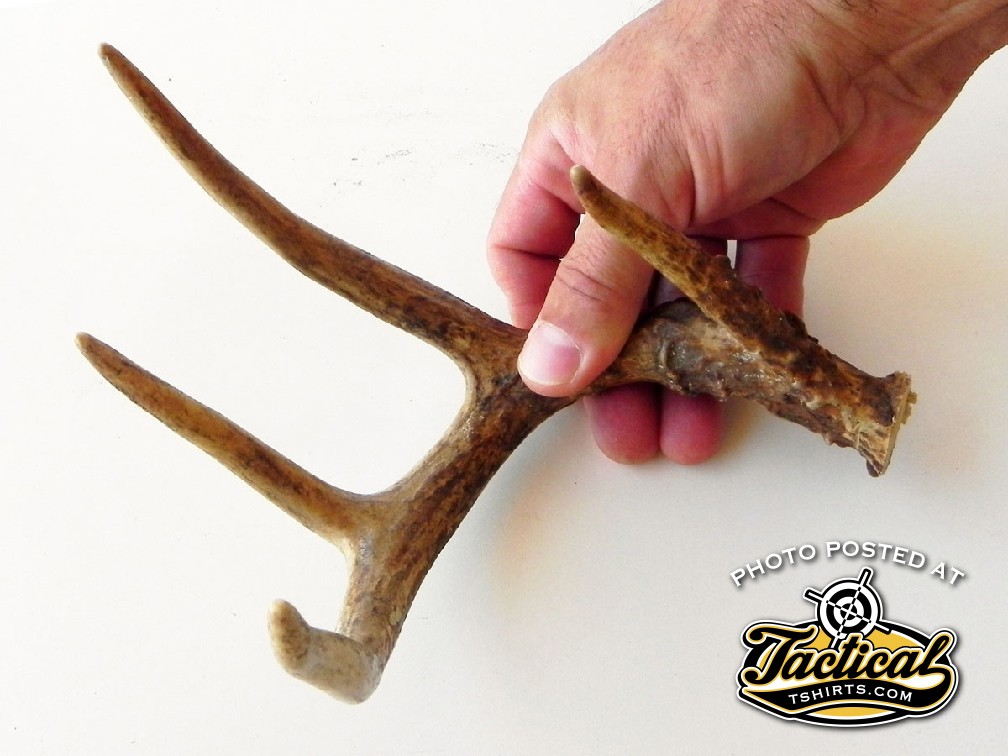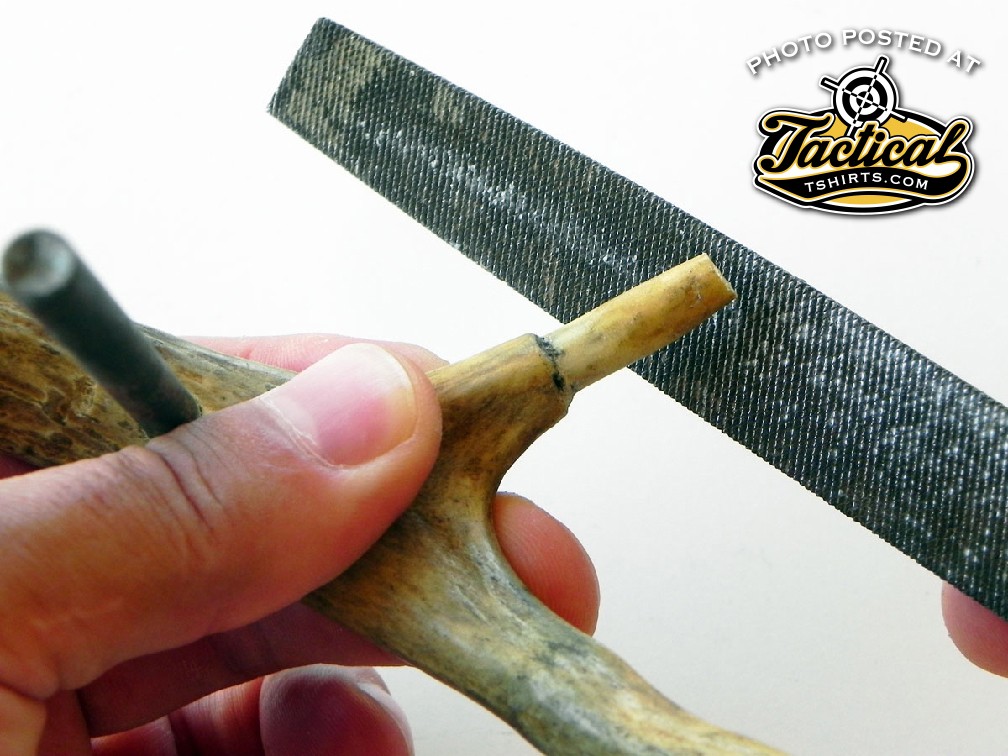Here’s a simple DIY project for your inner buckskinner—cool looking and functional blackpowder tools made from the antlers of that little dinker you shot last season and are too ashamed to put on the wall.
Since blackpowder charges are volumetric, it’s easy to make a powder measure from a chunk of antler. It takes a little trial and error to get the cavity just right, but once you do, it will never go out of adjustment or wear out. I like to use the burr end of the antler for measures because they’re so much wider at the bottom and harder to tip over. Because this is usually the thickest part of the antler, it also allows for a larger volume of powder to be measured from a smaller overall section of antler leaving more antler for other projects.

Before you begin this project, try several different loads in your muzzleloader to find the one that shoots best with the bullet you want to use, and know that you can have more than one powder measure for different bullets or uses. For example, the roundball target load I use in my .50-cal. Hawken is 50 grains, but my roundball hunting load for that same gun is 80 grains, so I have two measures.

My boy wanted an antler powder measure for a target load of 35 grains for his .45-cal. Hawken, so we began by adjusting our volumetric blackpowder measure to 35 grains and filling it with some old ground walnut tumbling media. Don’t use real blackpowder, Pyrodex or other blackpowder substitute propellant when making these tools. Because things are by volume, you don’t need to use the real thing, and using the real thing is inviting Murphy to show up with his friend Darwin.

Once you know your desired load, it’s simply a matter of drilling into the antler either deeper (without drilling through) or with a progressively larger bit and constantly comparing the volume of the hole you drill to the volume you set your powder measure at. Here’s a tip. If you lay your drill bit down next to your section of antler, you can mark the bit with a piece of tape as a depth gauge so you don’t drill all the way through. Stop can check frequently and, if you go too far and have too large a cavity, just fill the bottom with some two-part epoxy.

For the starting tool, you can use a chunk of antler for a simple handle, but I like to use a fork. A fork looks cooler, plus you can use one tip or end to make a ball starter. The short starter is some random piece of rod (preferably brass so you don’t cause a spark) countersunk and epoxied into the antler, while the ball starter is “turned down” using a coarse file.
Scott Mayer
www.tacticaltshirts.com
www.john1911.com
“Shooting Guns & Having Fun”
- CMMG Banshee & DefCan - April 13, 2018
- Cartridges Before There Were Cartridges - May 7, 2017
- Gas Rings Seal Test - April 17, 2017





